#recha
Text
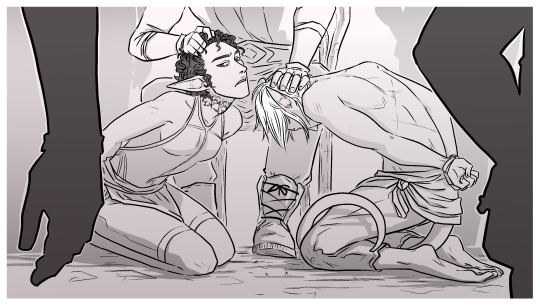
Whumptober 2023 - Day 20 - Dehumanization
Not born into a certain class, maybe even belonging to another species, crossing paths with the wrong people... and just like that your autonomy gets taken away and you get treated like things, like goods to be bartered with, like property without free will.
#whumptober#whumptober2023#dehumanization#enslaved#slave#captive#achaar djaanib#shakkau#recha#whump art#whump
501 notes
·
View notes
Text
Welp, rechas becoming bad's mom wasn't on my bucket list for 2024.
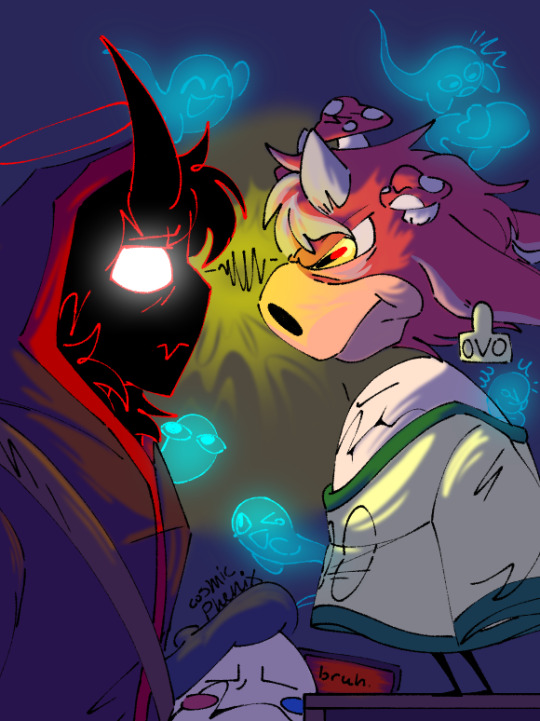
Bbh's lore is going crazy. Tiktok mom arc is probably one of my favorite ones rn lmfao
Bonus doodle!

Can you tell I can't actually draw cows yet?
#qsmp fanart#qsmp eggs#qsmp richarlyson#qsmp badboyhalo#qsmp pomme#bro really came back from the dead and immediately got adoped by a literal egg with a cow head.#poor dapper too! he just got his dad back and now was forced to adop him#like what a swap lol
42 notes
·
View notes
Text

A Woman Of Valor: Recha Sternbuch
She saved thousands of Jews from the Nazis.
Recha Sternbuch was an Orthodox Jewish woman in Switzerland who saved thousands of Jews from the Nazis.
Recha was a young mother who owned a business with her husband Yitzchak in Montreux Switzerland. They were Swiss representatives of Va’ad ha-Hatsala, the rescue committee of the American Union of Orthodox Rabbis.
In 1938, while pregnant, Recha began spending nights near the Austrian border to smuggle in refugees who were being turned back by Swiss border guards. Recha befriended a Swiss police captain, Paul Gruninger, who helped her smuggle over 800 refugees from Nazi-controlled Austria into neutral Switzerland.
The Nazis discovered what Recha was doing – apparently due to a Jewish informant – and she was arrested and jailed, causing her to miscarry. Once released from prison, Recha continued her activism. She forged visas that enabled hundreds of German and Austrian Jews to escape to Switzerland. Recha also helped smuggle Jews to Palestine by way of China.
On the day of her son’s bar mitzvah, Recha heard that Jews were being deported from Vichy France. She skipped the bar mitzvah ceremony and got on a train to France where she distributed visas and money to French Jews to help them escape. As an Orthodox woman, she normally would not take a train on Shabbat, but the preservation of human life overrides virtually every other Torah commandment.
Recha sent coded cables to contacts in Jewish rescue committees in the United States and Turkey. In 1942 she sent an urgent cable alerting American Jews to the genocide taking place in Europe. She developed a relationship with the Papal Nuncio to Switzerland, Monsignor Phillippe Bernadini, and he provided her with access to Vatican couriers for sending resources to Jewish resistance organizations.
Incredibly, in 1944 Recha successfully contacted Jean Marie Musy, the former president of Switzerland and a close friend of Heinrich Himmler, a leading member of the Nazi party. Recha charmed Musy, and convinced him to negotiate with Himmler, who agreed to release Jews from concentration camps in exchange for $1 million. About 1200 Jews were freed before the exchange was shut down by Nazi collaborators in Switzerland. Recha also negotiated the release of thousands of Jews held in concentration camps in Austria.
After the war, Recha tirelessly visited Displaced Persons Camps to locate surviving Jewish children and connect them with foster and adoptive Jewish parents.
The descendants of the Jews Recha saved now number in the hundreds of thousands.
For her determination to achieve the near-impossible, we honor Recha Sternbuch as this week’s special Thursday Hero.
33 notes
·
View notes
Text
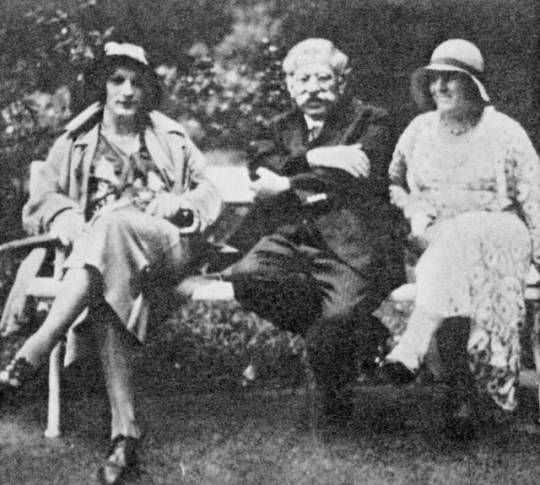
Hirschfeld, (an Ashkenazi Jew from a prominent family in Poland) was educated in philosophy, philology and medicine. An outspoken advocate for sexual minorities, Hirschfeld founded the Scientific-Humanitarian Committee and World League for Sexual Reform. He based his practice in Berlin-Charlottenburg during the Weimar period. Historian Dustin Goltz characterized the committee as having carried out "the first advocacy for homosexual and transgender rights". He is regarded as one of the most influential sexologists of the twentieth century.
Hirschfeld was targeted by Nazis for being Jewish and gay; he was beaten by völkisch activists in 1920, and in 1933 his Institut für Sexualwissenschaft was sacked and had its books burned by Nazis. He was forced into exile in France, where he died in 1935.
The Institute housed Hirschfeld's immense archives and library on sexuality and provided educational services and medical consultations; the clinical staff included psychiatrists Felix Abraham and Arthur Kronfeld, gynecologist Ludwig Levy-Lenz, dermatologist and endocrinologist Bernhard Schapiro, and dermatologist Friedrich Wertheim. The institute also housed the Museum of Sex, an educational resource for the public, which is reported to have been visited by school classes. Hirschfeld himself lived at the Institution on the second floor with his partner, Karl Giese, together with his sister Recha Tobias (1857–1942). Giese and Hirschfeld were a well-known couple in the gay scene in Berlin where Hirschfeld was popularly known as Tante Magnesia. Tante ('aunt') was a German slang expression for a gay man but did not mean, as some claim, that Hirschfeld himself cross-dressed.
People from around Europe and beyond came to the institute to gain a clearer understanding of their sexuality. Christopher Isherwood writes about his and W. H. Auden's visit in his book Christopher and His Kind; they were calling on Francis Turville-Petre, a friend of Isherwood's who was an active member of the Scientific Humanitarian Committee. Other celebrated visitors included German novelist and playwright Gerhart Hauptmann, German artist Christian Schad, French writers René Crevel and André Gide, Russian director Sergei Eisenstein, and American poet Elsa Gidlow.
In addition, a number of noted individuals lived for longer or shorter periods of time in the various rooms available for rent or as free accommodations in the Institute complex. Among the residents were Isherwood and Turville-Petre; literary critic and philosopher Walter Benjamin; actress and dancer Anita Berber; Marxist philosopher Ernst Bloch; Willi Münzenberg, a member of the German Parliament and a press officer for the Communist Party of Germany; Dora Richter, one of the first transgender patients to receive sex reassignment surgery at the institute, and Lili Elbe. Richter had been previously arrested for cross-dressing and discharged from the military. At the suggestion of a close friend, she later came to the institute for help. Hirschfeld had coined the term transvestite in 1910 to describe what today would be called transgender people, and the institution became a haven for transgender people, where Hirschfeld offered them shelter from abuse, performed surgeries, and gave otherwise unemployable transgender people jobs, albeit of a menial type, mostly as "maids".
That is the official account. But left out is that Magnus Hirschfeld was also an advocate of sexualizing children or Pedophilia and was engaged in Social Experimentation and Engineering while in Weimer.
"...to advocate for homosexual and transgender rights], was a reformer who encouraged society to recognize and accept sexual manifestations in infants and realize that sexual experimentation was part of adolescence. Ellis held that it was important to repeal bans on contraception as well as laws prohibiting sexual activity between consenting adults in private. (Bullough, 1996, p. 76)
This sounds reasonable enough, and it was entirely in accord with the value-set I was raised with. Yet, in the context of other less openly-discussed areas of “sexual exploration” which seemed to sprout quite organically from the Fabian tree (such as PIE), it also reads like a recipe for disaster.
If we look at the twentieth century alone, the idea of sexualized children, and a belief in the benefits of adult-child sex, can be found in areas as seemingly diverse as:
Freud's theories, and his insistence that children's accounts of being sexually abused were based in their own fantasy life and secret desires, more than on actual events.
Early psychosexual research in the UK by Havelock Ellis and the Fabian Society (and later via the Tavistock Institute).
Magnus Hirschfeld and the Scientific Humanitarian Committee in Germany, probably the first advocacy for homosexual and transgender rights and later the Institute of Sexual Research.
The Order of Chaeronea (founded by George Cecil Ives)nd the “Uranian” or “third sex” movement.
Early literary works such as Nabokov's Lolita (inspired by Ellis).
Experiments in progressive schooling initiated by Fabians such as Edward Carpenter and Cecil Reddie.
The early Wiccan movement (such as the Order of Woodcraft), which Crowley influenced and was directly involved in (he wrote many of the rituals with Gerald Gardener).
“MKULTRA” mind control experimentation in the US and the UK in the 1950s and beyond. This overlapped with the use of hallucinogens as a means of “liberation,” something Crowley was directly involved in.
Alfred Kinsey's “groundbreaking research,” which entailed the controlled sexual abuse of children and the recruitment of child molesters to do it. (Kinsey was also interested in Crowley.)
The Kinsey-inspired “sexual revolution” and the counterculture which sprung from many or all of these prior (mostly state-funded) “movements.” (The Beatles were influenced by Crowley, as was Leary.)
The Kinderladen of 1960s Germany—leftist schools where children were taught, for “political” reasons (i.e., social liberation), to have sex with adults.
Charles Manson and his “family,” who, like Crowley (having doubtless read him), prohibited the discipline of children and included them in group sex play.
The Paedophile Information Exchange, affiliated with the UK National Council for Civil Liberties; its aim in the 1970s was to reduce or abolish the age of consent so adults and children would be free to “love one another.”
Jimmy Savile, in the 1950s, ’60s, ’70s, ’80s, ’90s, and 2000s, whose long career as a child rapist flourished in tandem with his high-level political associations, his “friendship” with the royal family, and his equally long-term, still-undivulged, “charity” work for the UK National Health Service (including Tavistock). And so on."
The Vice of Kings: How Socialism Occultism and The Sexual Revolution Engineered A Culture of Abuse by Jasun Horsley
And exactly what went on at the institute in Weimer, founded by Hirschfeld?
"Berlin became the center of sexual research in the 1800s and early 1900s, Magnus Hirschfeld the leader of the pack. The population of Berlin exploded, from the 400,000 in the 1800s to 4 million in 1920. Berlin went from a city of open sewers to the first city ever electrified, with, in 1800, electric streetcars and lighting. It went from a city of open sewers to one of public toilets and baths, from the filthiest to the cleanest city in the world, infinitely more hygienic than London, Paris and N.Y. Magnus Hirschfeld (1868–1935) was a sexologist who practiced in Berlin. He founded the Scientific Humanitarian Committee with others in 1897, the purpurpose to promote sexual understanding. His work was inspired by a military officer who committed suicide on the eve of his wedding, preferring death to what would be required on his honeymoon night, an epiphany for Hirschfeld.
Dubbed the Einstein of sex, Hirschfeld opened the Institute for Sexual Research in the liberal Weimar Republic in 1919, that housed a Museum of Sex and had some 50 rooms, one of which was occupied for a time by Christopher Isherwood and visited by W.H. Auden, André Gide and Sergei Eisenstein. There was a museum with sex toys and walls plastered with photos of nudes, presumably there for sexual education, and lots of men dressed as women and women as men, both in photos and live as visitors. Teas were offered at the Institute, reigned over by Hirschfeld and his lover Karl Giese.
Bar hopping at night was included, so that in one way or another one could meet and mate with whomever one wished, back ‘’home’’ at the Institute. For those passing through like Isherwood the occasions to meet boys, the private rooms and stacks of pornography, made the Institute a horny lad’s wet dream..." Isherwood Diaries



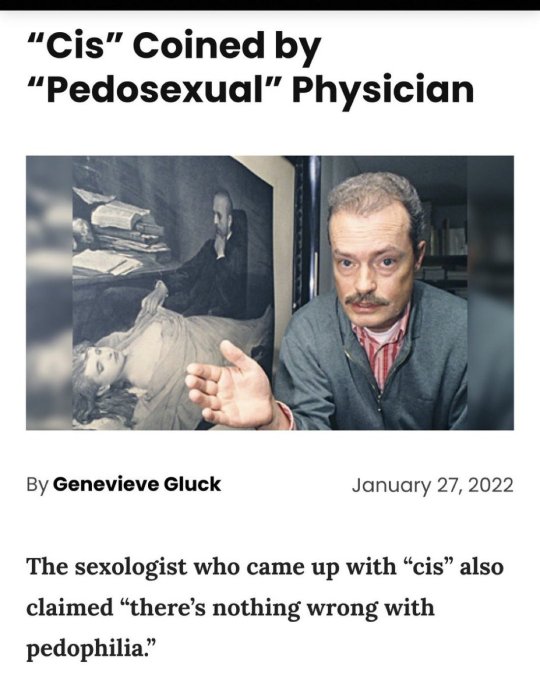
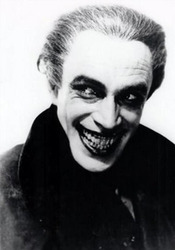



In “The Childhood Origins of the Holocaust,” the psycho-historian Lloyd deMause talks about Weimar culture, the flourishing of the arts and sciences in Germany during the Weimar Republic. This period between Germany's defeat in World War I and Hitler's rise to power, deMause writes, may have produced “exuberant creativity and experimentation” but also created “anxiety, fear and a rising sense of doom.” By the end of the 1920s, so many reactionary anti-democratic backlash parties had spontaneously sprung up that Weimar was called “a Republic without republicans.” People began to call for “emancipation from emancipation” and “a restoration of authoritarian rule.” (deMause, 2005)
Hypersexuality, pushing Sex and Gender theories, crossdressing, extreme representations of Transgenderism, encouraging prostitution, pedophila, Occultism, and a growing sense of doom. Sound familiar? It should.
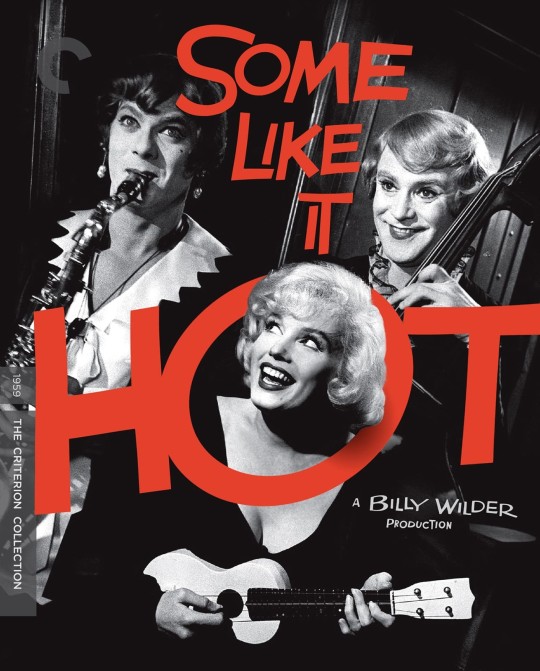
The point? Magnus Hirschfeld was just one of a group of prominent to wealthy men using marginalized people for social experimentation, and the pushing of their own agendas during pre-WWII Germany. 100% sure Sexual Liberation and Gender and Sex debates by political extremists were pushed as hard then, as they are being pushed now, the result of which was/is of course, using it as an excuse to push Conservstism/Fascism. Hirschfeld was also NOT forcibly exiled from Germany. Luckily for him, in the months before and after the Nazis burned the Institution, he was on a worldwide book tour. Hirschfeld exiled himself to a luxury apartment in first Paris, then Nice. But how many 1000s of LGBTQ stuck in Weimer were killed during WWII?
#Wanda#Hidden LGBTQ History#Hidden German History#Hidden British History#Social Engineering#Socialism#Leftist Politics#Jasun Horsley
5 notes
·
View notes
Text
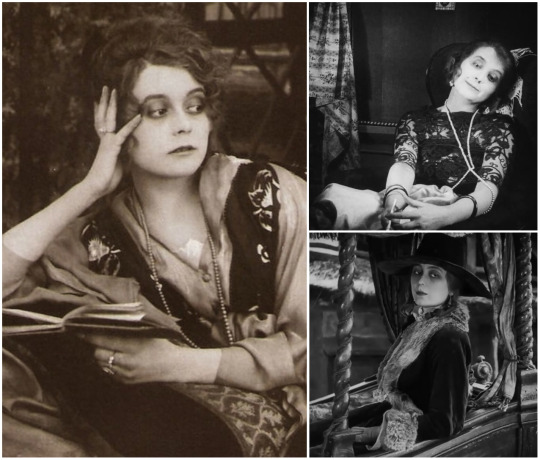
Herzlichen Glückwunsch zum Geburtstag, Gertrude Welcker! ❤️
(July 16, 1896 – August 1, 1988)
Gertrude Welcker was a stage and silent film actress; her film career was short lived, lasting from 1917 to 1925. The role she’s best known as, the alluring and enigmatic Countess Dusy Told of Fritz Lang’s 1922 epic crime thriller masterpiece, Dr. Mabuse, the Gambler.
Below is a summary of her life and career, with the people she had collaborated with as an actress.
She was born in Dresden, Saxony, Germany on July 16, 1896. Her younger brother Herbert was born in 1898. Gertrude’s father worked as editor-in-chief and general manager of the Posener Tageblatt, he died in 1909.
During the First World War, she visited Max Reinhardt’s acting school in Berlin. In 1915-16, she had starred in productions at the Albert Theatre in her hometown. During the years of 1916-19, Welcker performed at Deutsches, Kammerspiele, and Volksbühne theatres. Her stage roles include portraying a prostitute in August Strindberg’s Meister Olaf, Lesbia in Friedrich Hebbel's Gyges and His Ring, Recha in Gotthold Ephraim Lessing’s Nathan the Wise, Sister Martha in Gerhart Hauptmann's The Ascension of Little Hannele, and Desdemona and Jessica in William Shakespeare’s Othello and Merchant of Venice respectively.
Her film debut in 1917 was in Felix Basch’s Eine Nacht in der Stahlkammer as Jane Kendall, starring Harry Liedtke as her husband. Her next film was as an angel in Hans Trutz in the Land of Plenty, starring and directed by her stage collaborator Paul Wegener. The film also featured film director Ernst Lubitsch who portrayed Satan.
In 1918, she was in Lupu Pick’s Der Weltspielgel with Bernd Aldor and Reinhold Schünzel. She also starred in Viggo Larsen's The Adventure of a Ball Night with Paul Bildt and Paul Biensfeldt.
Welcker was also in Carl Froelich’s Der Tänzer with Walter Janssen.
She was the lead in the low-budget films, Die Geisha und der Samurai in 1919 and Eine Frau mit Vergangenheit in 1920.
Gertrude Welcker acted in films alongside Conrad Veidt, but those films are sadly considered lost. They portrayed siblings in F.W. Murnau’s Evening – Night – Morning and in Carl Boese’s Nocturne of Love, with Veidt as Frederic Chopin. (I, for one, would’ve loved for her to have been in a film as one of his leading ladies!)
In Hans Werckmeister’s 1920 sci-fi film, Algol: Tragedy of Power, she portrayed Leonore Nissen opposite Emil Jannings. It also starred Hanna Ralph, Hans Adalbert Schlettow (whom Welcker would appear with in Part II of Dr. Mabuse), and John Gottowt. The sets of the film were designed by The Cabinet of Dr. Caligari’s Walter Reimann.
She also appeared in Richard Oswald’s Lady Hamilton in 1921 as Arabella Kelly, in her first scene she is seen with Theodor Loos.
In 1922, Welcker portrayed her most infamous role as Countess Told in Dr. Mabuse, the Gambler starring Rudolf Klein-Rogge, with Aud Egede-Nissen, Alfred Abel, and Bernhard Goetzke. Also, in that same year - Welcker was in Carl Froelich’s Luise Millerin, an adaptation of Friedrich Schiller's Intrigue and Love as Lady Emilie Milford, another of her noteworthy roles. Previously, she was in a stage production portraying the role of Lady Milford's maid, Sophie. The film's all-star cast featured Lil Dagover as the title character, Paul Hartmann, Walter Janssen, Friedrich Kühne, Fritz Kortner, Werner Krauss, and Reinhold Schünzel.
She portrayed the villainess Gesine von Orlamünde of Arthur von Gerlach’s 1925 period drama film, Chronicles of the Grey House. It stars Lil Dagover, Paul Hartmann, Rudolf Forster, and Rudolf Rittner. Thea von Harbou was the film’s screenwriter with music composed by Gottfried Huppertz.
Her final film role was in Goetz von Berlichingen of the Iron Hand as Adelheid von Walldorf. She continued to act on stage until 1930. She has a total of 64 film credits to her name.
Around July 1930, Welcker married the Swedish painter Otto Gustaf Carlsund. She met him while on a trip to Paris. Their marriage lasted until August of 1937 and had no children. Before WWII broke out, she worked as an editor for UFA and by 1941, was active for the Red Cross. Some time before the war's end, she managed to leave for Sweden, and lived the rest of her life there.
It’s a great loss that so many of the films Gertrude Welcker did are considered lost and that her career as a film actress was as short as it was. Certainly, that many of those lost films showcased her great versatility. Gertude Welcker carried a remarkable set of talent, grace, beauty, charisma, and wit and is one of my most favorite actresses of the silent era I love.
Her filmography can be viewed here and here.
#gertrude welcker#1910s#1920s#german actresses#silent era#silent film stars#birthday remembrance#botd#vintage#she's a great actress#and I absolutely ADORE her <333#I was captivated by her ever since I first watched Dr. Mabuse#dr. mabuse the gambler#countess dusy told#happy birthday!#my post
2 notes
·
View notes
Text
Happy Father's Day from G.E. Lessing
(and somebody who has very obviously never read Emilia Galotti)
In my limited firsthand experience within the German educational system, Nathan the Wise is taught as a characteristic text of the 18th century and its interest in religious tolerance, overcoming superstition and prejudice, and the interrelation of humanity. And it's not not that.
But it's pretty hard to talk to about the plays Very Important Theme of Being a Dad to teenagers.
Like. For me the best scene in the play is not the Ring Parable or the final scene, but Act 4, Scene 7, when the two old men, Nathan and the Friar, sit down and talk about Recha and her family. How Nathan's wife and brother and seven hopeful sons were taken from him. How the Friar, then a squire, was tasked with bearing a newborn kid to an unknown man after just losing his father figure himself. How Nathan, in the depths of grief and justifiably enraged by the cruelty of the Crusades, chooses to accept this unexpected and seemingly-divine ordination, knowing that he may lose her again*. How the alleged 'crime' that drives the second half of the plot, Nathan's adoption of Recha, is one of the play's great selfless acts, akin to the Templar's rescue of the same and Saladin's pardon to the Templar, through which the characters recognize their shared humanity and, eventually, their kinship.
How, the year before Lessing finished Nathan the Wise, he became a father himself, as Knobloch writes:

How all of Nathan the Wise is woven as much of grief as of love: Nathan's for his first family, the Templar for his father and brothers, Saladin's and Sittah's for their brother. And how these characters chose to take on responsibility for other people anyway. How in coming to understand one another, and the interplay of love and grief in each of their lives, they realize that they were family all along.
Marketing a 250-year-old play with the "found/chosen family" trope might be somewhat anachronistic. And the play, for all of its progressive attitude in matters of religion, has some significant lacunae; there's no corresponding interrogation about the choice to be a mother, or a parent outside of the dictates of patriarchy. But for this Father's Day, I feel a great deal of affection for a man who got that being a Dad is a very consequential choice, one that was often dangerous to make, and chose to do so anyway.
I've heard there's a German Middle Grade adaptation of the play called Nathan und seine Kinder which I am very curious about, not only because its title follows the German Serious Fiction formula-equivalent of "An X of Y and Z" but because it has probably addressed the nuances of this particular theme much better than I can do in one silly little post.
*and yeah, this play goes with the idea that when a daughter gets married she ceases to be part of the family. But notably the play does not end with Recha getting married. It ends with an expansion, rather than a severance, of the central family's ties.
#thank you to all the dads and quasi-dads in my life#you have made it immeasurably more beautiful#Nathan the Wise#Nathan der Weise#G.E. Lessing#gotthold ephraim lessing#Lessing#Herr Moses in Berlin#rhymes with thaumaturge
3 notes
·
View notes
Text
Las 211 peliculas que he visto en 2022 (parte 2)
En negrita las que os recomiendo:
106. Azul oscuro casi negro (Daniel Sanchez Arevalo, 2006).
107. Destino Final 3 (James Wong, 2006)
108. El territorio de la bestia (Greg McLean, 2007)
109. Lake Mungo (Joel Anderson, 2008)
110. Las Ruinas (Carter Smith, 2008)
111. Los limoneros (Eran Riklis, 2008)
112. Superagente 86 de película (Peter Segal, 2008)
113. Petit Indi (Marc Recha, 2009)
114. Edificio España (Víctor Moreno, 2010)
115. El hombre sin pasado (Lee Jeong-beom, 2010)
116. Tron: Legacy (Joseph Kosinski, 2010)
117. Beyond the black rainbow (Panos Cosmatos, 2011)
118. La bicicleta verde (Haifaa al-Mansour, 2012)
119. The Bay (Barry Levinson, 2012)
120. Ahora me ves (Louis Leterrier, 2013)
121. El gran simulador (Nestor Frenkel, 2013)
122. The Borderlands (Elliot Goldner, 2013)
123. Frank (Lenny Abrahamson, 2014)
124. The Big Men (Rachel Boynton, 2014)
125. The Guest (Adam Wingard, 2014)
126. Caza al asesino (Pierre Morel, 2015)
127. El despertar de los dragones (Soi Cheang, 2015)
128. La juventud (Paolo Sorrentino, 2015)
129. Perdiendo el Norte (Nacho G Velilla, 2015).
130. Una pastelería en Tokio (Naomi Kawase, 2015)
131. Ahora me ves 2 (Jon M. Chu, 2016)
132. Cien años de perdón (Daniel Calparsoro, 2016)
133. Doña Clara (Aquarius) (Kleber Mendonça Filho, 2016)
134. El Caso Sloane (John Madden, 2016)
135. El Vacio (Jeremy Gillespie y Steven Kostanski, 2016)
136. La autopsia de Jane Doe (André Øvredal, 2016)
137. Paterson (Jim Jarmusch, 2016)
138. Reina de Katwe (Mira Nair, 2016)
139. The eyes of my mother (Nicolas Pesce, 2016)
140. Un italiano en Noruega (Gennaro Nunziante, 2016)
141. Ingrid Goes West (Matt Spicer, 2017)
142. Lady Bird (Greta Gerwig, 2017)
143. Tierra Firme (Carlos Marques-Marcet, 2017)
147. Verónica (Paco Plaza, 2017)
148. Default (Kook-Hee Choi, 2018)
149. El ombligo de Guie’dani (Xavi Sala, 2018)
150. Searching... (Aneesh Chaganty, 2018)
152. Silvio (y los otros) (Paolo Sorrentino, 2018).
153. Un pequeño favor (Paul Feig, 2018)
154. Upgrade (Leigh Whannell, 2018)
155. Así crecen los enanos (Raul Serrano, 2019)
156. Bliss (Joe Begos, 2019)
157. Brittany corre un maratón (Paul Downs Colaizzo, 2019)
158. Contagio en alta mar (Neasa Hardiman, 2019)
159. El bosque maldito (Lee Cronin, 2019)
160. First cow (Kelly Reichardt, 2019).
161. La cabaña siniestra (Veronika Franz y Severin Fiala, 2019)
162. La democracia en peligro (Petra Costa, 2019)
163. Los días que vendrán (Carlos Marques-Marcet, 2019)
164. Nación cautiva (Josh Wyatt, 2019)
165. Quien a hierro mata (Paco Plaza, 2019)
166. The Beach House (Jeffrey A Brown, 2019)
167. Vivarium (Lorcan Finnegan, 2019)
168. Aves de presa y la fantabulosa emancipación de Harley Quinn (Cathy Yan, 2020)
169. Casa Ajena (Remi Weekes, 2020)
170. Come true (Anthony Scott Burns, 2020)
171. El capital humano (Marc Meyers, 2020)
172. El hombre invisible (Leigh Whannell, 2020)
173. Hillbilly, una elegia rural (Ron Howard, 2020)
174. La boda de Rosa (Iciar Bollain, 2020)
175. Mandíbulas (Quentin Dupieux, 2020)
176. Mas allá de los dos minutos infinitos (Junta Yamaguchi, 2020)
177. Minari. Historia de mi familia (Lee Isaac Chung, 2020)
178. Murder Death Koreatown (anonimo, 2020)
179. Sputnik (Egor Abramenko, 2020)
180. Tenet (Christopher Nolan, 2020)
181. Underwater (William Eubank, 2020)
182. Un lugar tranquilo 2 (John Krasinski, 2020)
183. Black Widow (Cate Shortland, 2021)
184. Chavalas (Carol Rodríguez Colás, 2021)
185. El buen patrón (Fernando Leon de Aranoa, 2021)
186. Freaks Out (Gabrielle Mainetti, 2021)
187. Gaia (Jaco Bouwer, 2021)
188. Hombres lobo entre nosotros (Josh Ruben, 2021)
189. In the Earth (Ben Weathley, 2021)
190. Kate (Cedric Nicolas-Troyan, 2021)
191. La abuela (Paco Plaza, 2021).
192. La peor persona del mundo (Joachim Trier, 2021)
193. Los voyeurs (Michael Mohan, 2021)
194. No mires arriba (Adam McKay, 2021).
195. One Shot: Mision de Rescate (James Nunn, 2021)
196. Paris, distrito 13 (Jacques Audiard, 2021)
197. Petit Maman (Céline Sciamma, 2021)
198. Sin tiempo para morir (Cary Joji Fukunaga, 2021)
199. Spencer (Pablo Larrain, 2021).
200. Spiderman: No way home (Jon Watts, 2021)
201. Titane (Julia Ducornau, 2021).
202. Ultima noche en el Soho (Edgar Wright, 2021)
203. Un héroe (Asghar Farhadi, 2021)
204. Woodlands Dark and Days Bewitched (Kier-La Janisse, 2021)
205. Alcarras (Carla Simón, 2022)
206. Bullet Train (David Leitch, 2022)
207. El agua (Elena López Riera, 2022)
208. Kimi (Steven Soderbergh, 2022)
209. Minions: El origen de Gru (Kyle Balda, 2022)
210. Thor: Love & Thunder (Taika Waititi, 2022)
211. Todo a la vez en todas partes (Dan Kwan y Daniel Scheinert, 2022)
3 notes
·
View notes
Text
Bananarchy
•
Evil. Gru had become evil. After twenty years of his darling daughters fleeing the nest and living their own lives far away from him, he had become soured to the world. It's not like his daughters hated him and fled an abusive father, it's just that life swept them away. Slowly, they all moved across the country and started their own lives. Of course they try to find time for their father, but as we all know life just... happens. As the once doting father realized that his daily chats with his darling daughters became rare occurrences, he got angry and bitter. His mother dying didn't help his situation, either. Every little person that brushed by him and tried to speak to him was somehow responsible for all of the pain and fury he felt.
Gru's devious acts used to be theft and miscellaneous little tricks. His evil would inconvenience and scare people, but that's where the line would be drawn. However, as Gru's anger festered his urges increased. It started out with beating a guard that caught him during a heist. The guard was fired up, furious that he was bound. If only they had gagged him, too. He goaded Gru; he screamed at him and called him a coward. He said a true man wouldn't bind him up, and instead would fight him like a man. Gru walked over and nearly bashed his face in. If Bob didn't intervene, then he would've been long dead. Maybe that would've been the better option. The man's face after that was deformed, covered in scars with an eye missing.
He loved it; nothing excited Gru more than the adrenaline he got from his brutality. The violence made him forget the aching hole in his heart that his absent daughters had left. Even if just for a second, it numbed the unbearable pain, but it was never enough. The more atrocities Gru had committed, the more he craved it. It went from beatings to homicide at an alarming rate. His inventions to shrink and steal things became inventions to slaughter as many people as possible. He would experiment with new and fun ways to do it; he would squeeze the life out of someone with his own hands one day then burn someone to death with a ray the next.
"Ba sup Whaaat? pik tos reffud da be (this isn't what it was supposed to be)", Bob thought.
When Bob was just a child, he had joined forces with Gru. Together they comitted various fun and petty crimes, but he never signed up for murder. Gru didn't care about this, though. He wouldn't confront his own feelings, so nobody else was allowed to feel theirs.
"Kill her." Gru growled at Bob last week.
"Radbad... radbad domo batooay ba. Ka pudum't vivo com gaenu asa ka batooay ba. Lam's sola a lip, Gru. Lam's sola a fucking lip (Please... please don't do this. I can't live with myself if I do this. She's just a child, Gru. She's just a fucking child.) Bob pleaded for the young girl's life. They were robbing a bank and the girl and mother just happened to be cashing a check while it was going down. The girl, who could be no older than seven, threw herself over her mother. She sobbed as the color drained from the woman's eyes and the pool of blood grew around her.
"Mom, mommy, please! Please wake up please! Mommy!" The girls shrieks echoed throughout the building. Bobs heart sunk into his stomach. He pressed the gun to the girls head. She didn't even notice it, her focus was locked onto her still cold mother.
"Ba tis ta merciful tipa da batooay (this is the merciful thing to do)," he thought. "Ta pappala tis een agony recha prompo. Lam sola ethnob la mama ads a agden, asa lam lumfag ba pen lam polo kaylay da vivo com pak sin alga dia de la levo. Pak tis no levo sec ehkit (The girl is in agony right now. She just watched her mother eat a bullet, if she survived this then she would have to live with that image every day of her life. That is no life worth living)."
Bob was desperate to justify the situation. If he did, that meant he wouldn't have to life with the crushing overwhelming guilt. It didn't work, though. Every time he closed his eyes he saw the sobbing girls' chunky blood-soaked brains splattered against that wall. He couldn't bare it. It felt as if there was a truck parked on top of his chest. Every breath he took made it feel as if he were working out for hundreds of hours. He was exhausted, he had to do something. He sent out a secret memo to all minions while Gru was out to gather in their basement base.
"Siblings, radbad bebada. Ka cono ta mew ka dub nama daunting, pelo feila bare nan ugly dun. Gru tis kapee de hottoe (Siblings, please listen. I know the words I speak are daunting, but they bare an ugly truth. Gru is out of control)." A concerned murmur was heard all throughout the room.
"Kan pem fem dugoda eyed yokpye, pem bonded com pak lonely pes lip. Le mobla nos mara filinn yee paslay. Pem hagan la mucha agei modkif elm yee disorder askoud. Pik tos agei, pik tos fid. Seep me unami to ba, kan tos ta tepo veela to dif zelp ba via (When we were bright eyed children, we bonded with that lonely angry child. He made us feel welcomed and wanted. We had so much fun causing chaos and disorder everywhere. It was fun, it was happy. Let me ask you this, when was the last time you truly felt this way)?"
The minions' whispers reached a halt. Pure silence spoke for them. Nobody was happy anymore, nobody was okay anymore. Fear and pain soaked their every thought.
"Qatavo, pem talp cep noor vow ohosae ba ka yee ivycay da tepo hagtot. Qatavo, pem talp bin gru. Noor uts, noor sadness, noor gaspen, pik sama tadda be fino. Pem sama tenga ta oebun wagleu wop yee hub noor hodwhy. Whaaat? batooay to tom (tomorrow, we shall raise our arms against this man and commit one last murder. Tomorrow, we shall kill Gru. Our pain, our sadness, our confusion, it will all be over. We will keep the general population safe and gain our freedom. What do you say)?" Loud cheers filled the rooms. Bob, for the first time in years, was filled with hope. Finally... finally it'll be over.
The next morning, Gru walked through the door. Bob grabbed his gun and pointed it at Gru's head.
"No, gru. Non diejag. Tu reign de terror tis fino. Nopa unama sama seegem tadwiz ta brutal curse tu kor nop (No, Gru. Not anymore. Your reign of terror is over. Never again will anyone suffer the brutal curse your hands hold)." Gru let out a laugh that seemed to echo throughout the entire house.
"What, do you think I fear you? You think I fear your pitiful little gun?" He smirked. "Do it, Bob. Pull the god damn trigger."
Bobs fury bubbled and boiled over. He pulled the trigger, but instead of a loud bang all that was heard was a quiet click. Gru once again let out a loud laugh.
"Oh Bob, you fucking moron. You really thought you could kill me?" Bobs minion siblings surrounded him, holding up various weapons towards him.
"They told me about your little... stunt. I'll give it to you, it certainly was a nice try, but come on. They're not all cowardly wimps like you."
They grabbed Bob and dragged him outside to the backyard where there was a large cross standing on top of a bed of hay.
"No, no radbad stop! pem roopa templa a talamo ohosae lom, radbad! le pudum't tenga gego cos com lo tyranny (no, no please stop! We still stand a chance against him, please! He can't keep getting away with his tyranny)!"
They didn't listen to him, though. All they did was laugh as they strapped him to the cross and put a thorny crown upon his head to inflict maximum pain and ensure he was as... flammable as possible. They threw a torch upon the pile of hay and watched as Bob slowly was roasted to death. HIs screams filled the air, making the atmosphere heavy. They did what they had to, they did what they had to. If they didn't do this, he would kill them. Even if they had succeeded in killing Gru, where would they go? They did the right thing, right?
2 notes
·
View notes
Text
Johanna Oppenheimer (1872-1942) pintora alemana.
Nació en Frankfurt am Main. Provenía de una familia judía de clase media alta que vivía en Würzburg desde 1875. Sus padres fueron el corsario Adolf Oppenheimer y su esposa Recha. Su hermana Klara asistió a la escuela de profesores y estudió medicina después de que a las mujeres se les permitió estudiar medicina.
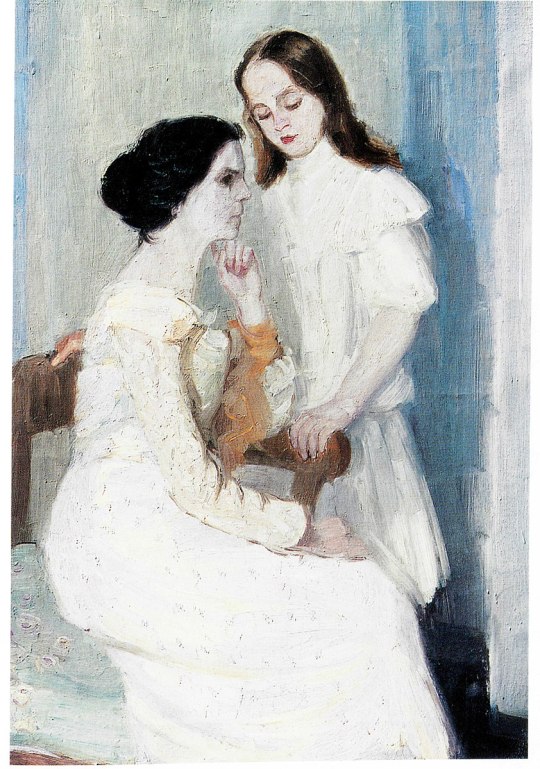
En 1900 se mudó a Munich con el apoyo financiero de sus padres y asistió a la escuela de pintura de la asociación de artistas y fue alumna de Heinrich Knirr. Allí conectó con los bohemios de Schwabing. En 1910 se convirtió en artista independiente.
A partir de 1910, Johanna intentó trabajar como artista independiente en la ciudad de Múnich. Su estilo pictórico se basó en famosos impresionistas franceses como Edouard Manet, Claude Monet, Paul Cezanne y Edgar Degas.

Johanna atrajo la escena artística de Munich con su diseño pictórico. Pronto encontró conexión con la escena de Schwabing y entró en contacto con grandes como Joachim Ringelnatz, Rainer Maria Rilke, Wassily Kandinsky y Paul Klee.
En 1914, el periódico Münchner Neuesten Nachrichten habló muy positivamente sobre ella, que ahora también participaba en exposiciones como la del Palacio de Cristal de Múnich. Al mismo tiempo conoció a la cantante Else Hoffmann en un café de Munich.

Ambas se hicieron amigas, descubrieron Schöngeising como lugar de vacaciones y retiro y en 1919 se mudaron a la ciudad, donde se mudaron a una casa con estudio.
A partir de 1919 vivió y trabajó en un idilio rural en Schöngeising, donde hizo construir una villa con su amiga, la cantante Else Hoffmann, en la que instaló un estudio. Formaron un trío de amigos artistas con el virtuoso de la cámara, Heinrich Scherrer, que también residía allí y lo hicieron hasta la muerte.
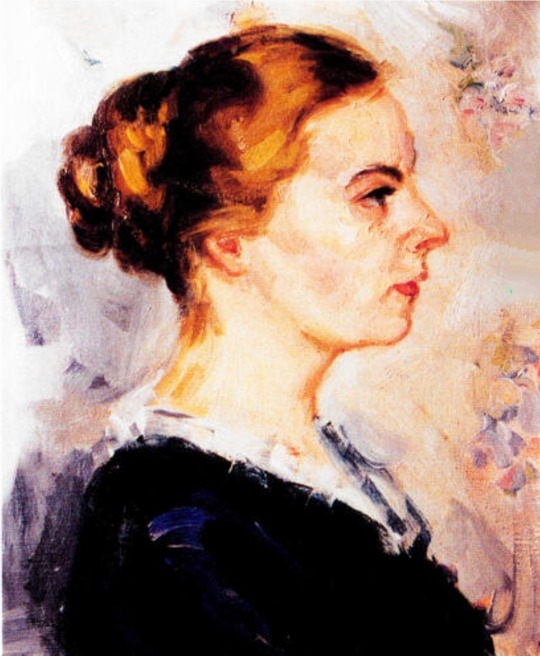
En Schöngeising, Johanna pintó paisajes y especialmente a los niños del pueblo, a quienes también dio lecciones, y se sumergió profundamente en el idilio del pueblo. Había encontrado su refugio y podía vivir de la venta de sus obras.
Pero 1933, después de la entrega del poder a los nacionalsocialistas, fue un doloroso punto de inflexión para ella. Johanna Oppenheimer era la única judía en Schöngeising y ahora era ignorada y ya no se le permitía ejercer su profesión ni utilizar el transporte público, ni ver a un médico alemán, podía salir de casa sólo una hora al día y, sobre todo, no podía tener ningún contacto con los llamados arios.
Ya no salió de casa por miedo a sufrir ataques, llevando la estrella amarilla, y a principios de 1942, con casi 70 años, fue deportada.

El 29 de marzo de 1942 fue deportada al campo de concentración de Milbertshofen y de allí, el 17 de junio de 1942, al gueto de Theresienstadt, donde contrajo disentería debido a las condiciones de prisión y murió el día antes de Navidad.
Aparte de algunas fotografías, se ha perdido su extensa obra. Sólo se conservan unos pocos cuadros de la fatídica pintora Johanna Oppenheimer.
En 2013 se puso un recuerdo en Schöngeising. Una calle de Schöngeising lleva su nombre.
Le ponemos cara.

0 notes
Photo

2.4G Mini Wireless Mouse Recha ... Price 14.98$ CLICK TO BUY
0 notes
Text

Whumptober 2023 - Day 27 - Locked Away
352 notes
·
View notes
Text
how to recharge a disposable vape
1 note
·
View note
Text
The Level Young Royals rechaed to in my everydaylife is the way I just casually and without thinking start to murmur the melody Wille played for Simon in season 1 episode 3.
Like. It did something to my brain.
#Young royals#Young royals is very important series in my lifw#It just really hit me#I hope we will be safe after the ending#I really really need it#And I know we will#This is something twitter dramas can't take from me#The fact that Young Royals saved me
1 note
·
View note
Text

If you have a problem in Ukraine, send me the contract. Click the photo...
Presto ci sarà una gara a Recha dove ci saranno le vetture della Ferrari / Soon there will be a race in Brescia where Ferrari cars will be present
0 notes
Text
Illuminating Innovation: The Evolution of Magnetic LED Light Rechargeable
In the ever-evolving landscape of lighting solutions, one company stands out as a beacon of innovation—Magnetic LED Light Rechargeable. This trailblazing company has redefined the way we perceive and utilize portable lighting, introducing cutting-edge technology that combines the power of LEDs with the convenience of rechargeability.
Magnetic LED Light Rechargeable has set itself apart in a crowded market by addressing a common challenge faced by users of portable lights: the need for a reliable, durable, and energy-efficient solution. Traditional battery-powered lights often fall short in providing sustained brightness, and the constant need for battery replacement contributes to environmental waste. Recognizing these issues, Magnetic LED Light Rechargeable embarked on a mission to revolutionize portable lighting.
At the heart of Magnetic LED Light Rechargeable's success lies its commitment to harnessing the potential of light-emitting diodes (LEDs). LEDs have long been celebrated for their energy efficiency and durability, making them an ideal candidate for portable lighting solutions. However, Magnetic LED Light Rechargeable takes this a step further by integrating magnets into their design, adding a layer of versatility that sets their products apart.
The magnetic feature of these lights enables users to easily attach them to various surfaces, providing hands-free illumination in a multitude of scenarios. Whether you're working in a dimly lit garage, camping in the great outdoors, or facing a power outage at home, Magnetic LED Light Rechargeable becomes an indispensable companion, effortlessly adhering to any magnetic surface.
One of the key highlights of Magnetic LED Light Rechargeable is its rechargeable capability. By eliminating the need for disposable batteries, the company contributes to reducing environmental impact while providing users with a cost-effective and sustainable lighting solution. The rechargeable feature ensures that users can enjoy long-lasting brightness without the hassle of constantly replacing batteries, making Magnetic LED Light Rechargeable both economical and eco-friendly.
The design philosophy of Magnetic LED Light Rechargeable is centered around user convenience. The lights are crafted with user-friendly features, such as adjustable brightness levels and compact, lightweight builds, making them easy to carry and use in various settings. The company understands the diverse needs of its customer base, from outdoor enthusiasts to professionals in need of a reliable work light, and strives to meet these needs with versatile and adaptable products.
In addition to their commitment to functionality, Magnetic LED Light Rechargeable places a strong emphasis on durability and quality. The robust construction of their lights ensures resilience in challenging environments, making them suitable for rugged outdoor use. The company's dedication to quality extends to the rechargeable batteries used in their products, ensuring a longer lifespan and consistent performance.
As a socially responsible company, Magnetic LED Light Rechargeable is also involved in initiatives aimed at promoting sustainable practices and environmental conservation. By creating products that reduce the carbon footprint associated with disposable batteries, the company aligns its business goals with a broader commitment to creating a greener and healthier planet.
Customer reviews and testimonials further highlight the positive impact of Magnetic LED Light Rechargeable on the lives of its users. Customers consistently praise the reliability, brightness, and versatility of the lights, expressing satisfaction with the overall performance and durability. The magnetic feature, in particular, has garnered acclaim for its practicality and ease of use, proving to be a game-changer for those in need of hands-free lighting solutions.
Looking ahead, Magnetic LED Light Rechargeable continues to push the boundaries of innovation in portable lighting. The company invests in ongoing research and development to explore new technologies and features that can enhance the user experience. With a focus on sustainability, Magnetic LED Light Rechargeable aims to stay at the forefront of the industry, providing customers with cutting-edge solutions that align with their values and needs.
In conclusion, Magnetic LED Light Rechargeable has emerged as a shining example of innovation and sustainability in the realm of portable lighting. By combining the power of LEDs with the convenience of rechargeability and magnetic attachment, the company has created a product that not only meets the practical needs of users but also contributes to a greener and more sustainable future. As we continue to navigate a world that demands versatility and eco-conscious choices, Magnetic LED Light Rechargeable stands as a beacon of light, illuminating the path towards a brighter, more sustainable tomorrow.
0 notes
Text
i love how the japanese 12-key layout is extra intuitive if you know spanish and english as well.
each key has a kana that generally ends in -a, and in order to reach the other vowel versions of them, you have to swipe:
left ([i]zquierda) for -i
[u]p for -u
right (d[e]recha) for -e
d[o]wn for -o
same is true for english only if you flip it horizontally actually. i know most just remember it because the japanese vowel order is aiueo, but idk, my brain is just wired like that i guess
0 notes